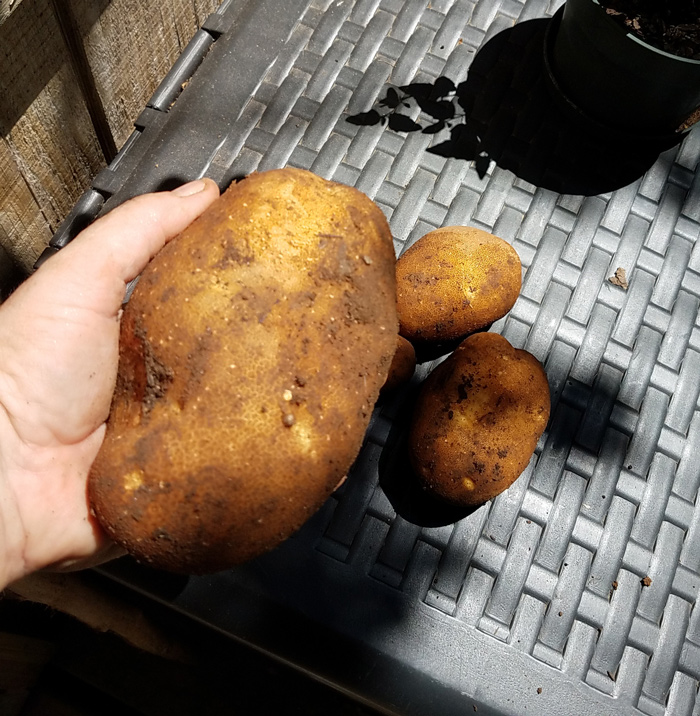Welcome!

It’s tater planting time!
With January (and February!) deep freezes and snows still fresh in our minds, it’s amazing to think that it’s time to start the next round of gardening. One of the earliest crops home gardeners can plant is potatoes (Solanum tuberosum).
Technically, planting time for potatoes in our area is mid-February through March 31. Potatoes planted after the end of March will still grow but you may find that your yields are lower and the potatoes themselves may be smaller.
Again, technically, gardening experts will tell you to purchase certified seed potatoes from a reputable source to ensure the harvest will be free of disease. This implies that you can’t grow potato plants from the tubers you find on grocery store shelves. That’s not true.
When Mama and Grandma planted potatoes, they would do a little of both. Grandma usually bought seed potatoes from the local feed and seed store. But I remember cutting sprouted “eyes” from the potatoes in the 25 pound bag of potatoes Mama would purchase at the grocery store. We ate a lot of potatoes so it wasn’t hard to come up with enough eyes to set several rows.
We didn’t really track these things at harvest time so I can’t report on how well or how large Mama’s grocery store taters did compared to the seed potatoes Grandma bought. We were glad to have whatever sprouted, whatever size it was or how it looked as long as it wasn’t green.
According to the N.C. Cooperative Extension Service, some of the best potatoes to grow in our area are “Yukon Gold,” “Kennebec” and “Red Pontiac.” These tend to be resistant to problems like leaf roll and potato virus. One pound of seed potatoes should net you around 15 pounds of harvest if all goes well.
You can also try your hand at uniquely colored varieties like “Adirondack Blue” and “Purple Majesty.” Or you might like to try long-form potatoes like “Russian Banana” or “French Fingerling.” All of these are planted the same way as white potatoes.
I’ve found the best results come when you dig a trench 10-12 inches deep. Back fill it with 5-6 inches of good, loose, organic soil and compost. Potato eyes are planted around 6 inches deep. You need one to two eyes per set. That means it is OK to cut a seed potato into several parts, if it has a lot of eyes. Plant each set about one foot apart.
Top the sets with loose soil and mulch. I use straw for my mulch because it’s inexpensive and readily available. Potatoes like a rather acid soil of between 4.8 to 6 pH, which is usually not a problem in North Carolina soil. This also means that if you end up having to use a landscape mulch to cover your sets, you don’t normally have to worry about affecting the soil’s pH.
At least once or twice during the growing season, add more soil or compost to your trench. This is called “hilling up” the trench. Since potatoes are a cool season crop, they need a lot of protection as daily temperatures rise in May and June. If it snows again this month or March, potatoes don’t care. They’ll just keep doing their thing until harvest time arrives in late June or July.
JD Walker is an award-winning journalist and magazine editor with over two decades of experience covering business, government, health, lifestyles and gardening topics. She lives in
Randolph County and divides her time between writing, gardening, eating good food, drinking good wine and catering to one spoiled rotten dog and two skittish cats.
